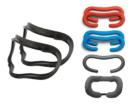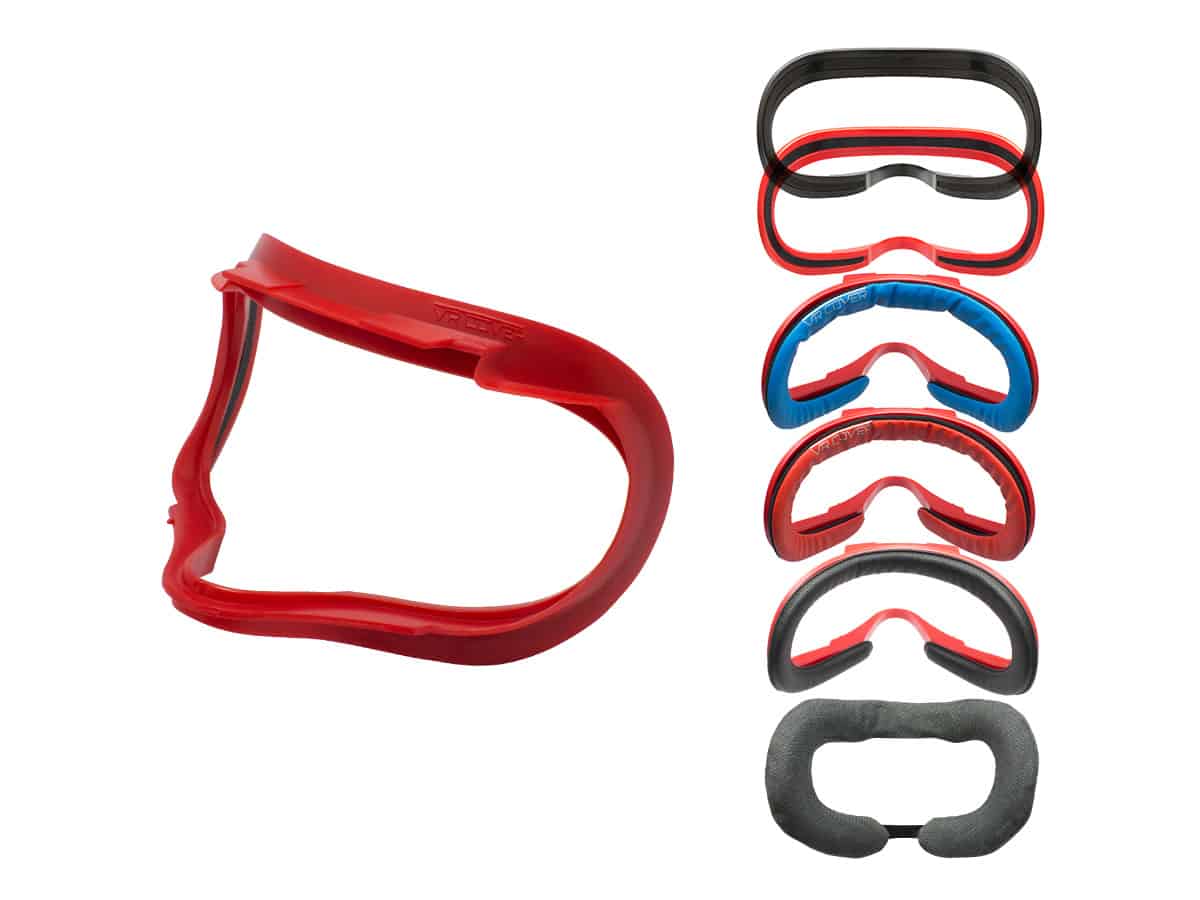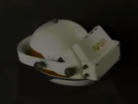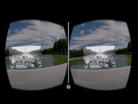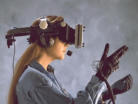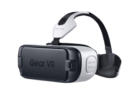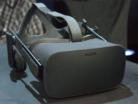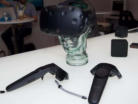Three new Facial Interface Sets for the Oculus Rift
Following on from the success of our original Rift Facial Interface sets we’re happy to announce three new sets enabling you to customize your Rift more than ever before. Our custom facial interface is now available in red and black, we introduce a new style of foam replacement for the Standard & Pro sets and now offer a cheaper basic set for those looking for a simple hygiene solution. Our Standard and Pro sets include a new style of PU leather foam replacement offered in Red and Blue. As well as looking great, the new foam replacements use a higher quality material for the most comfortable experience yet.
Oculus Rift Facial Interface & Foam Replacement Pro Set – $79.00
For the ultimate customization our Pro Set includes two facial interfaces in red or black along with three sets of foam replacements in red, black and blue. The foam comes in different sizes so you’ll always be able to find something that works no matter who uses the headset. The interfaces are available in a standard and long size and the set also includes a cotton cover for those who are active in VR and require some sweat absorbing material.
Oculus Rift Facial Interface & Foam Replacement Standard Set – $49.00
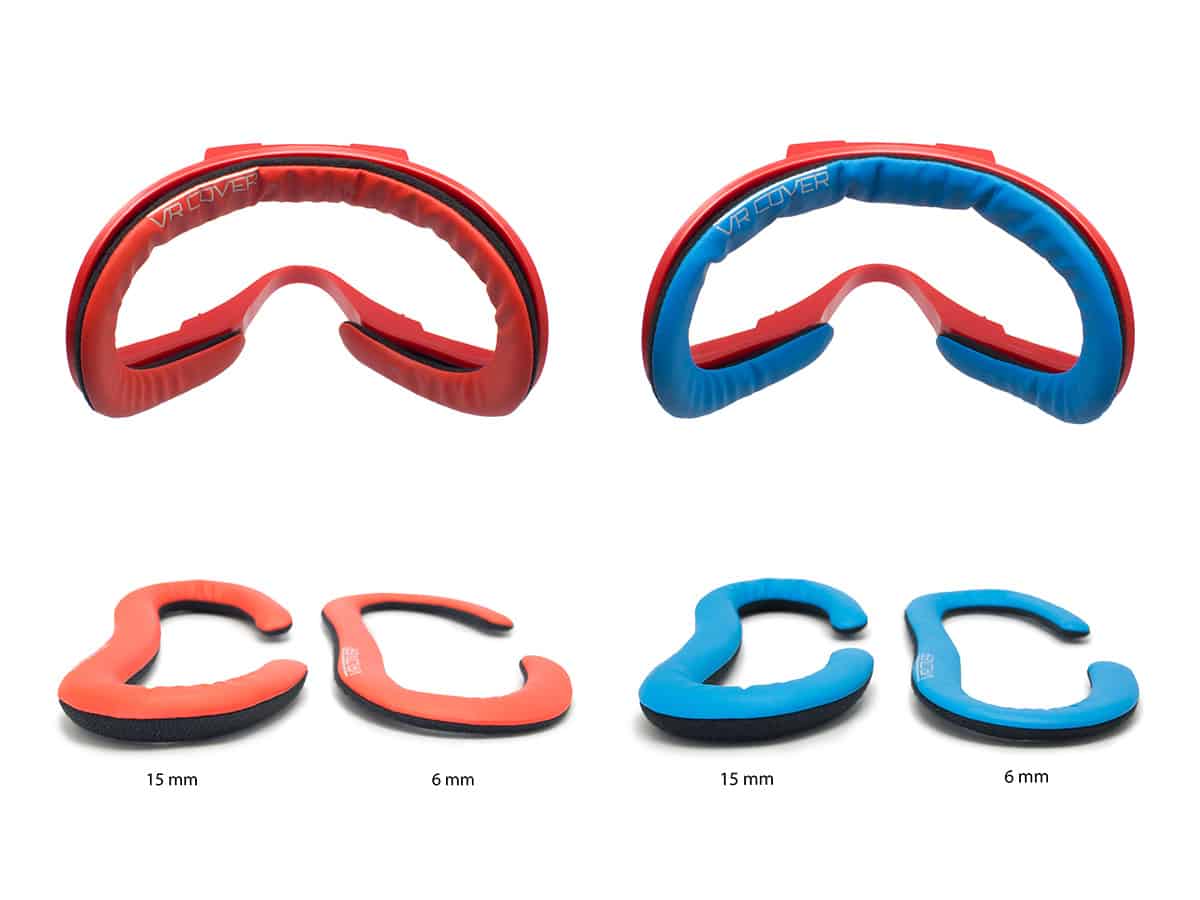
Choose between a red and black facial interface and receive four different foam replacements including a choice between our new red and blue foam. This is the go to set if you’re looking to improve hygiene and brighten up your headset. A cotton cover is also included.
Oculus Rift Facial Interface & Foam Replacement Basic Set – $29.00
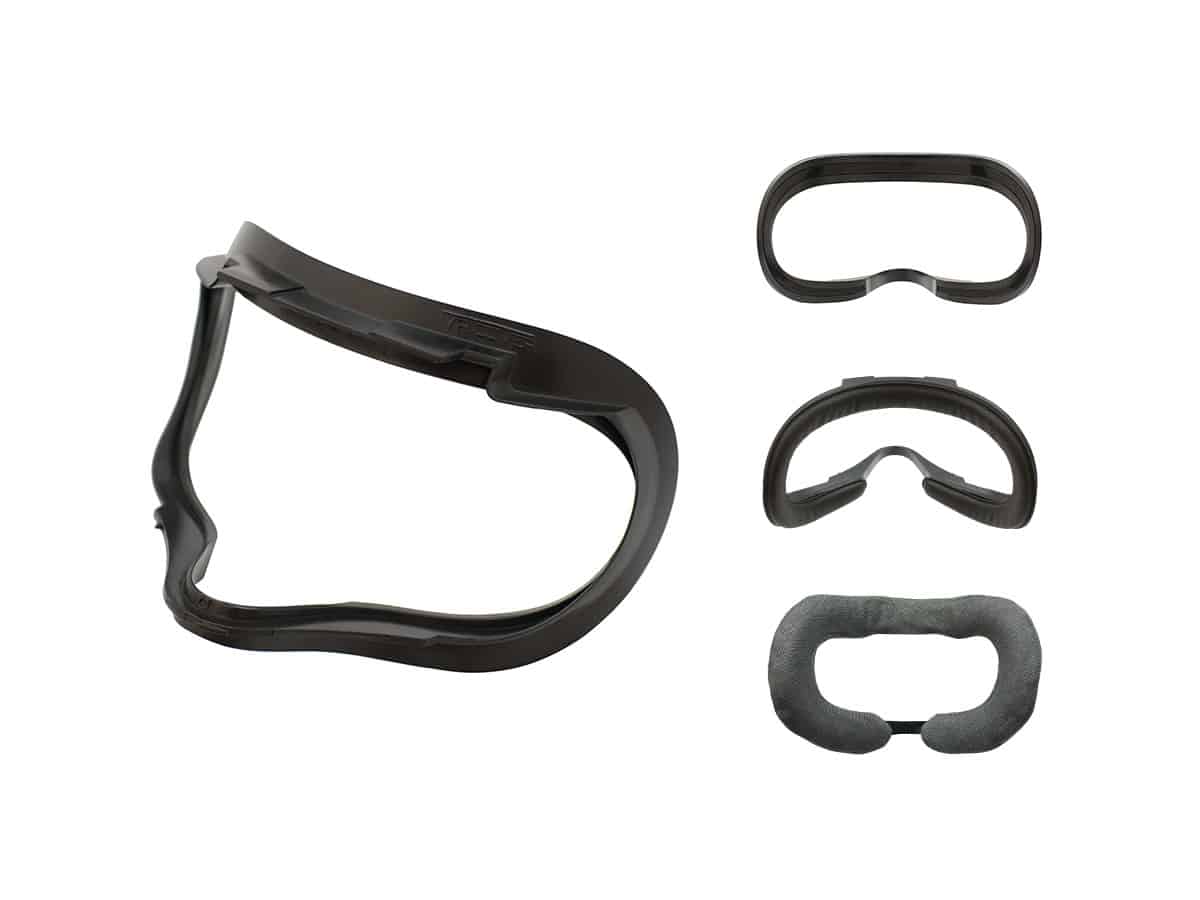
We’re now also happy to provide a Basic Set for those looking for a cheaper option that still provides a good level of hygiene and comfort. This set includes a black interface, one thin PU leather foam replacement (black) and a cotton cover.
All new sets are now available to pre-order on our store with shipping beginning Monday 8th May 2017.
Virtual Reality Retreat
In the modern world we are always switched on, always connected, always on the move. In many ways technology has shrunken the world and brought us closer together, but it’s also made it harder to detach from the stresses of life. At one time in the not too distant past, you only got the news three times a day. Once in the morning paper, once on the evening news and once again on the late night news if you stayed up to watch it. Generally, leaving work at 5pm meant leaving work behind until the next day, and a discussion of politics was an occasional and invigorating event among friends.
Thanks to technology, we have access to news twenty four hours a day as it happens and it seems to be either bad news or entirely inane. Work can not only reach you at home but anywhere you happen to be, and often you are connected enough to drop everything and do what needs to be done right where you are. Political discussions have given way to the incessant background noise of constant political disagreement. As wonderful as technology is, these and many other aspects of it, can make life more stressful and so it is no wonder that people want to switch off and reconnect with nature or themselves. For this, many turn to meditation retreats.
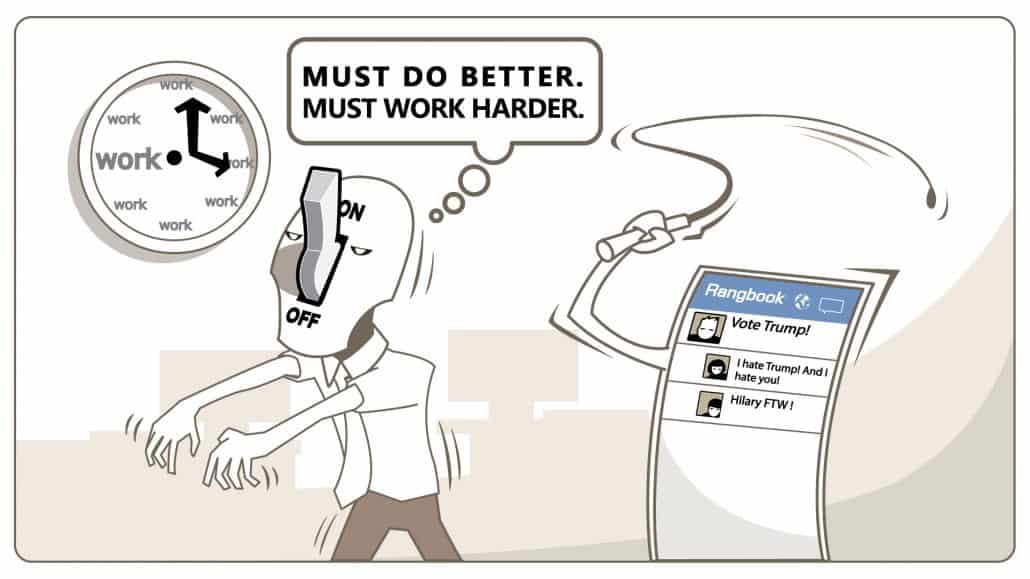
When I think of meditation retreat I imagine a group of people in a fancy resort-like setting with a spa and a lawn peppered with white fountains where you meditate at your leisure and make good friends. This is not necessarily the case. In fact, in researching this article I’ve yet to come across a single retreat that offers these things. Instead, meditation retreats seem to be strictly regimented, silent affairs where even eye contact is forbidden. There may be some yoga, but the point of the retreat is to spend time in your own mind, so most of your day will be spent in non-optional meditation in a room with everyone else.
For the intense and/or religious meditation practitioners these retreats are probably just fine. But for the rest of us, the ones who don’t want to live like a monk for a month, virtual reality may be the answer. While trying to replace a month long meditation retreat with current virtual reality technology is probably not a good idea, if not entirely impossible, that doesn’t mean virtual reality has nothing to offer. With virtual reality you could set up a mini retreat right in your own home, one that you can squeeze into your busy schedule without taking a sabbatical.
Virtual Reality can take you out of your environment and place you anywhere that can be displayed on a screen. You are not limited to what is physically possible. You can float through the clouds, meditate on the moon, and drift gently under the ocean while watching the fishes. You could even be a disembodied something floating among wisps of light. That’s the great thing about virtual reality, it can put you anywhere that the developer can imagine.
When you think of virtual reality you might think only about the headset, but virtual reality is already far more encompassing than that and will only get more so as time goes on. Already we have spatial audio and on some virtual reality devices, tracked controllers that put our hands in the virtual world in addition to the headset. This means that virtual reality can replace your world with another one. One that you can hear and interact with. When done well it becomes very convincing.
Currently meditation and relaxation applications are most widespread on the Samsung Gear VR. While this limits their immersive qualities, it does make them portable and available whenever you need them. Simply pop your phone into your headset and throw on some headphones and you will find yourself on a beach, or in a forest where you can take the time you need to draw in your thoughts, concentrate on your breathing and relax. This can even be done as a short meditation retreat during your lunch break while still leaving you enough time to eat or to unwind when you get home from work (even if it means sneaking into the washroom to do it.)
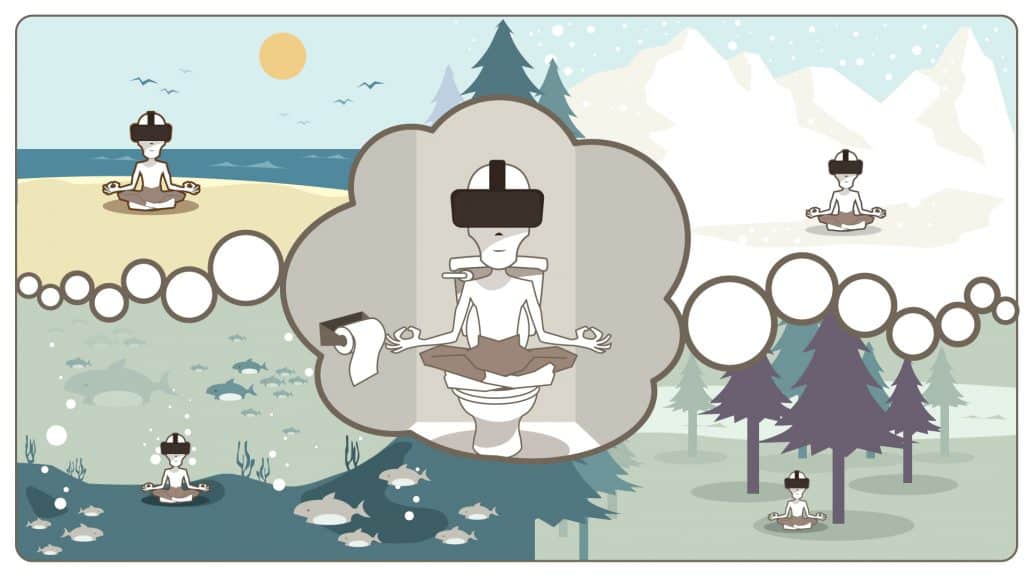
As VR develops virtual meditation retreats could become much different. Those who are developing virtual reality technology say that the end goal is something like the holodeck from Star Trek. In case you are not familiar, the holodeck is a room that creates virtual environments that are indistinguishable from the real thing. Some say that we could have something very close, minus the ability to touch the holograms, by 2024. Assuming that the tech becomes available eventually, even if not by 2024, you could conceivably have an entire proper meditation retreat without leaving your home.
Holodecks are a long way off. The tech we have right now will allow for short relaxing respites away from the hustle and never-ending bustle of modern life and, for most of us, that’s all we can afford anyway. If used daily the benefits from short virtual reality meditation sessions would have a greater impact than a retreat that is completed and then abandoned. It also won’t break the bank. Plus, let’s be realistic, when the holodeck technology comes about, if history is to be trusted, it will recreate your office at home, so you never have to leave.
Be careful what you wish for.
NASA and VR
Do you like space? Like, outer-space? Do you believe that going there and exploring is important to the future of humanity? I guess these days we have to ask the question, do you believe it exists? If not, this is probably not the article for you. For the rest of us, we owe a great debt of gratitude to agencies like NASA for making it their mission to cross the final frontier. And, to a lesser extent, agencies like NASA owe a debt, even if only a tiny one, to Virtual Reality.
Okay, to say that NASA owes a debt to VR may be reversing the situation, but NASA has certainly put VR to use and VR has helped to make space travel and the jobs that need to be done up there a bit safer by allowing astronauts to train on earth for their duties in space.
NASA has used virtual reality since at least the early 90’s when their virtual environments consisted of wire frame models only. Since then they have continued to upgrade their equipment. They now have a VR room with a bespoke VR set up that even has tracked gloves with pressure sensors on them to know when the astronaut is gripping something. In this room are physical representations of virtual objects, which are themselves representations of the real objects they will have to work with in space. These objects are hung from wires and pulleys so that moving them is similar to moving an object in space where it will have mass and all of the forces that go with it, but not weight. This, combined with a fully accurate virtual representation of their workspace is the closest thing the astronauts have to doing the real thing here on earth where a mistake isn’t going to cost a lot of money or human life.
More recently NASA has been using VR to visit Mars before making the trip there in real life. They have partnered with MIT and fusion.net to create the Mars 2030 Experience which allows them to simulate life on Mars and, with the help of physics simulations, allows them to test vehicle performance. The Martian landscape was created from years of Mars surface architecture studies and is as accurate as it can be based on current information. But this isn’t only a tool for NASA. It will be an experience we can all enjoy if we have the equipment to do so. The Mars 2030 Experience is to be released for free through Steam VR and fusion.net for the Oculus Rift, HTC Vive as well as other platforms.
NASA has shown that VR is more than just a plaything. In fact, it was a tool at the beginning and only became a plaything later. During the early days of VR, devices were quite expensive ranging from 50,000 to 200,000 dollars. Thanks to the popularity of video games the components required to make VR work well have significantly dropped in price making VR far more ubiquous and impressive. In the beginning I said that NASA owed a debt to VR, the truth is, VR owes a debt to NASA and other research agencies who kept VR alive for research purposes when the rest of the world wrote it off as a failed experiment.
Sources:
1980’s Virtual Reality – NASA Video:
https://www.youtube.com/watch?v=NAuytnYU6JQ&
Mars Immersion: NASA Concepts Bring Precision to New Virtual Reality Experience:
http://www.nasa.gov/feature/nasa-concepts-bring-precision-mars-to-virtual-reality
Education in VR
Educaton has changed very little since it became widespread 150 – 200 years ago. Since the beginning it has involved teachers, classrooms, desks, chalkboards and books. Advances in technology and population growth have changed some of the tools, but the methods have largely remained the same. For example, it isn’t as common for the entire school to sit in one classroom under one teacher, instead we have large schools with many classrooms for each grade and many teachers. No longer are notes taken on slates with chalk. Instead, pencils, pens and now even notebook computers and tablets are where we store lecture notes and work out our problems. Computers are frequently used to try to make learning a bit more entertaining by making games out of it. But the games either rely on having already been taught the material in class or else if the game teaches it, it does so in very much the same way that a book or the teacher on the blackboard would. So rather than being an educational tool, you could say that it’s more like a study tool.
I’m not knocking these advancements or education in general. But the world has changed an awful lot since the school system was created and education of the future is going to need more than just new tools to do the same old things. The world has never been static. Each generation added to our body of knowledge, but the rate at which these additions were made has not remained the same. At one time you would go to school and learn the facts that would get you through a life that generally consisted of one job and a family. For better or for worse, life is not like that anymore and storing facts in our brains is less important than learning to adapt, take risks, problem solve and plan a few steps ahead.
Virtual Reality is already being adapted for education. In a YouTube video put out by AMD (see sources below) one math teacher speaks of using virtual reality to demonstrate mathematical functions in a class or two that took him a year in University to be able to imagine and get his mind wrapped around. Being able to physically manipulate 3D coordinates in real time as the students watched made the lessons much easier to grasp.
In another video from TEDxCERN, Michael Bodekaer speaks about the use of virtual reality for science education. He lamented that students were bored in science class, often wondering why they were learning the things they were being taught. To solve this problem he made a virtual labroatory that gave access to top of the line science equipment and gamified the learning process by tasking students with solving a murder. If you have a Gear VR you can actually try a demo of the experience by searching for “Labster” in the Oculus store. Studies have been conducted by learning psychologists from Stanford, as well as Technical University in Denmark. In these studies they took 160 students, gave them a test then divided them in half and taught one group using only traditional methods and another group using only the virtual labs and then gave them a test at the end. The group that used only the virtual lab showed a 76% improvement in learning effectiveness. A further study combined the virtual laboratory learning with more traditional teacher led learning and found a 101% increase in learning effectiveness.
That may only be one study, but with results like that it certainly demands a deeper look. If we can double the effectiveness of our education by using virtual reality to augment the classroom experience with more practical, virtual experiences then it’s something that needs to be developed. And VR is still in the very early days. It’s only going to get better and more realistic and as it does virtual experiences will become more useful, and possibly just as useful as real situations, while being safer and cheaper.
Another way that VR is currently being used in education is through programs like Google’s Expediditions. With Expeditions, teachers can order the program from Google which comes with Google Cardboard headsets and VR capable devices for the students and tablet for the teacher. She is able to read the information off of the tablet while guiding the students through virtual tours of various places that they would otherwise not be able to go, places like Mars or the pyramids of Egypt. The teacher is able to draw the students attention to certain points of interest by touching them on the tablet and a marker then shows up in their experiences. This type of activity engages the students is ways that looking at a book will not. Being able to look down at Martian soil and then look up at the Martian sky is something completely unique to VR. Standing at the base of the Great Pyramid and craning your neck to see the top and realizing as you do just how big it really is will cement the idea in the students mind far better than the old tactic of drawing the pyramid next to a sky scraper, a whale, an elephant and a person.
There are certainly many more ways than just these to use VR for education and there will be more in the future. As VR develops and becomes more ubiquitous and VR cameras improve it could even become possible to attend school remotely and feel as though you are actually there. Or, instead of having a friends bring your homework home from school you could log on to the schools website and download the day and attend in VR when you feel better. This sounds like one of those old timey, black and white futurust videos from the Worlds Fair, but this isn’t wild fantasy. This could happen if the tech we have now improves. It’s possible, maybe even likely, that whatever VR education becomes in the future it will make my ideas seem just as quaint and ridiculous as those old videos that predicted women’s dresses adjusting to the time of day, but I only suggest it to get you thinking about the sort of things that will be possible very soon. It’s enough to make me want to do school over again.
Almost.
Sources:
VR In The Classroom: Early Lessons Learned from Google Expeditions:
https://www.youtube.com/watch?v=UuceLtGjDWY
These Two School Districts Are Teaching Through Virtual Reality:
http://fortune.com/2016/02/25/school-districts-teaching-through-virtual-reality/
VR in Education
https://www.youtube.com/watch?v=EXYzj6qwCCk
Reimagining education | Michael Bodekaer | TEDxCERN
https://www.youtube.com/watch?v=IYpovgka-9Q
The Year of VR Hygiene
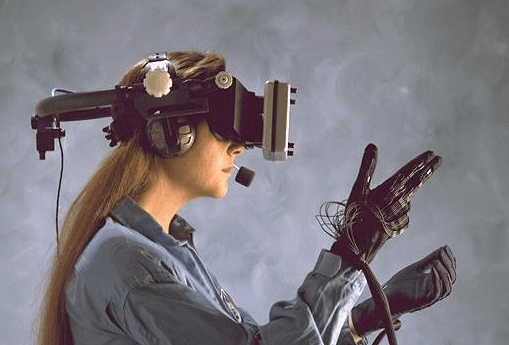
In spite of the fact that Virtual Reality seems to be taking over the world, it still has it’s share of naysayers. There are still those hangers-on who refuse to see the reality that is staring them in the face… pun absolutely intended. Most of these people must by now realize that they were wrong to doubt the successful resurgence of VR and they are simply holding their position in the faint glimmer of hope that this raging behemoth of an industry will trip over it’s laces and fall flat and they won’t have to admit they were wrong. With all of the major tech players involved, including Oculus, HTC, Valve, Sony and Google, that glimmer of hope now seems like a figment of their imagination. But there is one thing that could still kill VR before it has the chance to mature. Cooties.
That’s right, cooties. Germs. Disease, Gnarly funkage. Whatever you want to call it. These headsets can become filthy after prolonged use and possibly even spread disease. And though you probably received several cootie shots when you were in public school, you are going to want better protection than that. If this headset is going to be pressed against your face then you are going to want to be sure that it’s clean.
Imagine you went to a hotel and when you went into your room the pillows had no pillow cases on them. You call down to the front desk to let them know the mistake and they tell you that they don’t use pillow cases. I think most people would either check out immediately and find a new hotel or else sleep without a pillow. The thought of laying your head on something that countless other people have used with no protective barrier is revolting. And yet, out of box, the situation is very similar for users of VR headsets like the Oculus Rift or the HTC Vive.
Oculus and HTC have put a good deal of thought into the ergonomics of their headsets in order to ensure that they are comfortable. HTC has their thick, formed facial foam that provides a good amount of padding and Oculus, while not as thick, uses two layers of foam to provide comfort. The problem with both of these headsets is that the designers did not seem to take into account just how hot it can be inside these units, especially on a crowded show floor or in the heat of midsummer. Sweat happens in these cases and that facial foam becomes like a sponge, sucking up the dirt and grime that the sweat is gathering off of your face and the face of the other people who have used the headset.
While hygiene of the entire unit is important, especially when demoing to a lot of people, the most important area when it comes to cleanliness has to be the facial interface. It’s vital to make sure that this area is easily washable and the best way to do that is to cover it with a washable sleeve that can be removed, or better yet, that doesn’t have to be because the cover itself can simply be wiped down with an antibacterial cloth. If the entire padding can be made washable and removable, even better.
2016 looks to be shaping up to be the year of VR, what with companies like Facebook’s Oculus and HTC having already released their headsets, Sony set to launch theirs in the coming months and even Google getting into the game this fall with their Daydream VR standard. It seems that our future is going to be full of pressing our faces into these machines to do everything from play video games, to watch movies to shopping. So maybe we should also try to make sure that 2016 is the year of VR hygiene as well.
To make sure that your headset is ready for the Year of VR Hygiene, visit our store.
Final Shipping Update
Just a quick update. We have finally caught up with all orders and expect to ship all current orders until the 22nd and all orders that come in from now on until the 28th. After that we have VR Covers in stock to dispatch right away.
We are also going to announce some new features for the website next week. Please subscribe to our newsletter for updates and promotions.
By the way we ship now every day, so the date we mention just means the date until we definitely dispatch your order. Depending on when you ordered, chances are it ships a bit earlier.
Shipping Update & First Reviews
We keep shipping out more VR Covers daily now and if you did not hear from us yet, we did not forget you! We do our best and will send you your DHL tracking number 1-2 days after we shipped your VR Covers.
The first people received their VR Covers already. Here is a short unpacking video from /u/stormy3000.
Here is what he has to say about VR Cover:
So I just got my ‘VR Covers’ delivery.
Very pleased with the product.
Got 3 covers included in a tidy little bag made of the same cotton (at least it feels like cotton) cloth.
Each cover has the leather tag with the companies branding on.
They fit snugly to the DK2 without any fixing required.
It also includes a little velcro strap to hold the wires in place on top of my DK2.
Lastly it comes with a simple little set of instructions printed in a nice rustic way onto some thick brown paper.
Overall I’m very impressed, now I just need to find some spotty sweaty people to try out my rift and make use of the power of a washable cover.
The Virtual Dutchmen are also enjoying their VR Covers.
Oculus community manager Cybereality likes his new VR Covers as well.
I got mine today. Wouldn’t think I would be excited about a piece of fabric, but it actually works nicely. At first it didn’t seem like it would stay in place without elastic, but it seems OK. Only tested a few quick games, but it felt comfortable to me. The velcro strap is a nice touch. Good job.
Drash, the developer of Titan’s of Space also wrote a more detailed review of his VR Covers.
Just got mine in the mail! Here are some thoughts:
Comfort:
Love the material. Feels slightly cool on the face, which is a welcome change. Did not try for more than 5 minutes in a go to see what happens heat-wise, but that would be interesting to see as well.
Most importantly, there’s a bit of carefree-ness now, a lightness of heart. Because no matter what gets on the DK2 from my face, I can still demo this thing to others, and they can be carefree about it too.
Fit:
It fits very well over the bottom parts of the DK2, and is able to “catch” some pointy bits on the DK2 so it doesn’t seem to budge at all. The top center part does not hug the DK2 that much. I tried stretching it out, but it’s not too stretchy. It would probably help if there was something on the DK2 for it to grab onto, or if the cover had some elasticity in that region as the OP mentioned.
I normally pull the DK2 straight away from my face slightly before taking it off, but just as a test I tried just sliding the DK2 straight up and off as someone new might do, and the cover stayed put.
Extras:
The bag is nice, fits three covers. Not going to lose these.
I also really appreciate the velcro band for fastening the over-the-top cable in place.Pictures:
Thanks /u/vrcover! 🙂
Samsung Gear VR
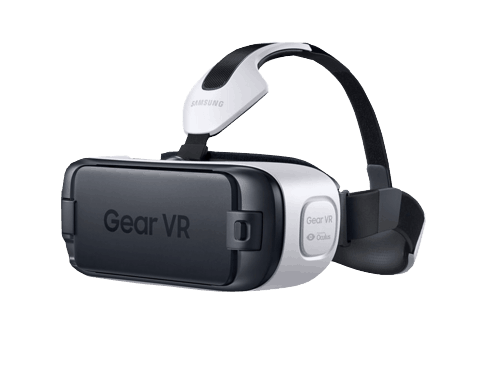
Samsung Gear VR is a mobile virtual reality headset developed by Samsung in conjunction with Oculus. It requires one of Samsung’s 2015/2016 flagship phones to operate. These phones are the Galaxy S6, Galaxy S6 Edge, Galaxy S6 Edge+, Galaxy Note 5, Galaxy S7 and the Galaxy S7 Edge.
The phone is inserted into the front of the Gear VR headset and becomes the display and processor. The headset itself contains the IMU which is used to track rotation. Gear VR does not yet have positional tracking. The device is powered by the battery in the phone though there is a micro USB port on the bottom so you can have your device plugged in while inside the headset. This will only charge the battery if the VR is not being used, but if it is, it will prevent the depletion of the battery.
The sensors inside the Gear VR unit are lower latency than those used in the phones themselves. This combined with a low persistence screen with sub 20ms motion to photon latency is what makes the Gear VR stand head and shoulders about cheaper mobile VR headsets such as Google’s Cardboard.
The consumer version of the Gear VR, or simply, Gear VR, is it’s third edition. While it is considered to be the first full consumer release, the two previous versions, the Innovator Edition (compatible only with the Note 4) and the S6 Innovator Edition (compatible with the Galaxy S6/Edge, pictured above) we publicly available in smaller releases.
When the phone is plugged into the Gear VR, Oculus Home is automatically launched and other processes are killed or pushed into the background. Oculus Home is where games are purchased for use on the Gear VR, as well as acting as a launcher for those games. Because Oculus Home launches automatically the Gear VR can only be used as a Cardboard viewer if the Gear VR process is stopped by another application such as Package Disabler Pro or Cardboard For Gear VR. Both are available at the play store for a fee.
Oculus Rift
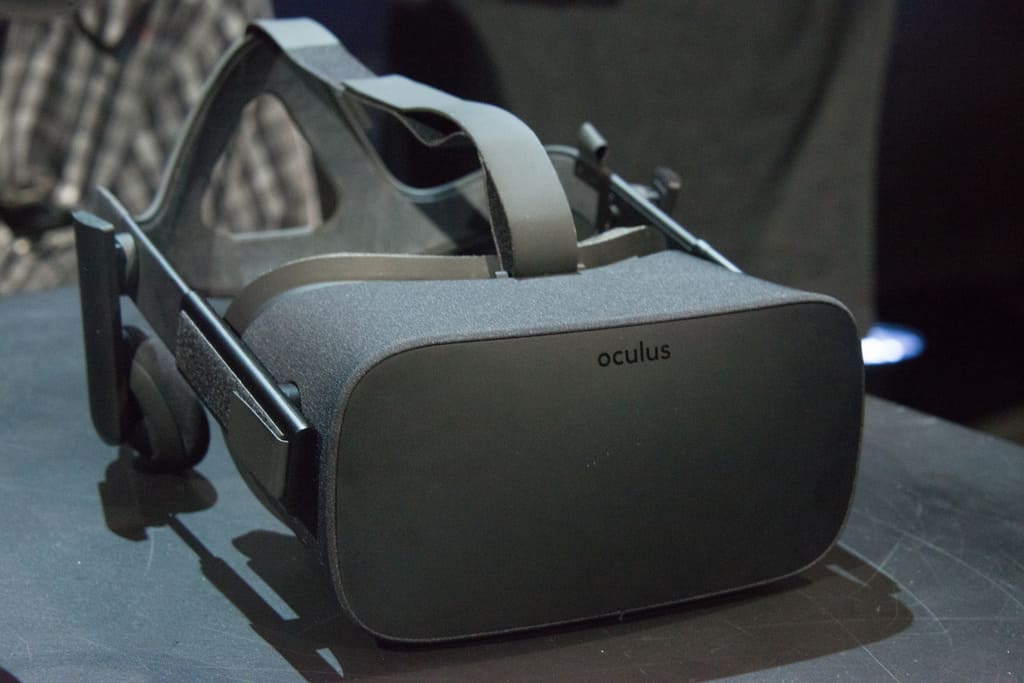
Rift is a virtual reality head mounted display developed by Facebook owned VR startup, Oculus. The headset is sometimes referred to as The Oculus, or The Rift but the proper name is simply, Rift.
Rift is the brainchild of Palmer Luckey who was 19 at the time that it was invented. With the help of John Carmack, Brendan Iribe, Michael Antonov, Jack McCauley, Nate Mitchell and Andrew Scott Reisse, he formed Oculus and had on of the most successful Kickstarter campaigns in the history of the crowdfunding site.
Rift is the first consumer headset in a line of headsets from Oculus including prototypes, some of which were publicly displayed, and some not, as well as two publicly available development kits.
Rift iterations: Duct Tape, DK1, HD Prototype, Crystal Cove, DK2, Crescent Bay, CV1; Many others that were never publicly shown
The Rift headset has 2 OLED displays at a resolution of 1080×1200 per eye, 90Hz global refresh, and low persistence. It has a rougly 110° field of view and comes with removable integrated headphones that provide 3D spatial audio.
Rift requires a powerful PC to run. The minimum recommended specs are:
Video Card: NVIDIA GTX 970 / AMD R9 290 equivalent or greater
CPU: Intel i5-4590 equivalent or greater
Memory: 8GB+ RAM
Video Output: Compatible HDMI 1.3 video output
USB Ports: 2x USB 3.0 ports plus 1x USB 2.0 port
OS: Windows 7 SP1 64 bit or newer
Depending on the parts you choose if you have to buy the computer and the Rift together you will spend around $1200 – $1500 on the PC.
HTC Vive
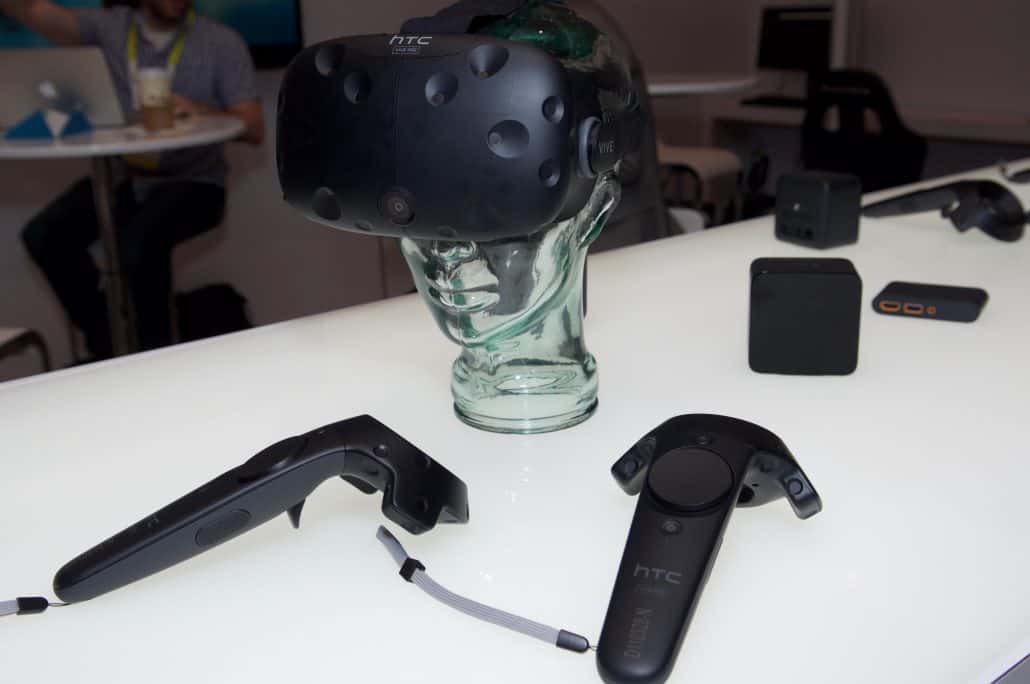 Vive is a Virtual reality headset developed by HTC in conjunction with Valve. It differentiates itself from the competition with the use of the Lighthouse tracking system that uses lasers to track the headset in 3D space allowing for a large play area, termed room-scale, which allows the player to move about a 15′ x 15′ or smaller play space. It also comes packed with two controllers which are also tracked by the lighthouse system, bringing your hands into VR.
Vive is a Virtual reality headset developed by HTC in conjunction with Valve. It differentiates itself from the competition with the use of the Lighthouse tracking system that uses lasers to track the headset in 3D space allowing for a large play area, termed room-scale, which allows the player to move about a 15′ x 15′ or smaller play space. It also comes packed with two controllers which are also tracked by the lighthouse system, bringing your hands into VR.
It was unveiled during HTC’s keynote at Mobile World Congress in March 2015. Preorders opened on February 29, 2016 and it launched April 5, 2016. It’s price is $799, which includes the headset, two controllers and two lighthouse base stations.
Specs:
Resolution: 2160 x 1200 (1080 x 1200 per eye)
Refresh Rate: 90Hz
Field of View: 110°
Positional Tracking System: 2 Lighthouse Base Stations
Weight: 555 Grams
Price: $799
